A dilation maps quadrilateral KLMN onto quadrilateral PQRS. Is the dilation a reduction or an enlargement?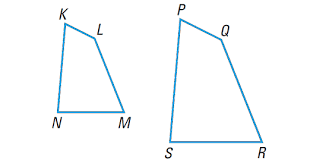
Enlargement
Triangle ABC has vertices A (2,4) and B (4,6)
Triangle is dilated by a factor of 3, what are the new coordinates?
(6,12) (12,24)
What changes when a figure is dilated?
the size

Are the two triangles similar?
Yes
A dilation maps quadrilateral ABCD onto quadrilateral WXYZ. What is the similarity ratio of the dilation? 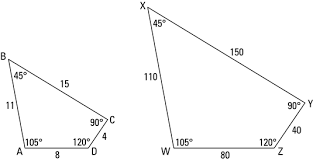
10
Triangle ABC has vertices A (2,4) and B (4,6)
Triangle is dilated by a factor of 5, what are the new coordinates?
(10,20) (20,30)
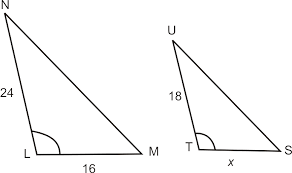
Solve for x
x = 12
Finish the similarity statement:
Triangle ABC ~ ...
ABC ~ DEF
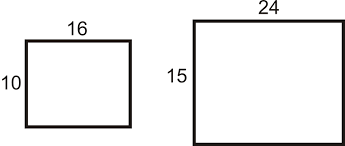 These rectangles are the result of an enlargement. What was the similarity ratio of the dilation?
These rectangles are the result of an enlargement. What was the similarity ratio of the dilation?
3/2
Triangle ABC has vertices A (2,4) and B (4,6)
Triangle is dilated by a factor of 1/2, what are the new coordinates?
(1,2) (2,3)
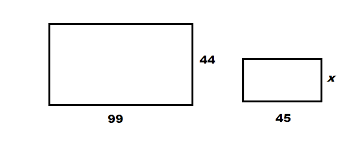
Solve for the value of x
x = 20
Finish the similarity statement:
Triangle RST ~ ...
RST ~ DEF
A dilation maps triangle YXZ onto triangle ABC. What is the similarity ratio of the dilation? 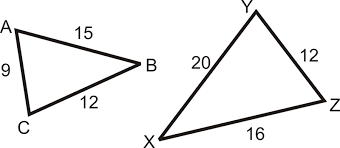
3/4
Triangle ABC has vertices A (2,4) and B (4,6)
Triangle is dilated by a factor of 1/4, what are the new coordinates?
(1/2, 1) (1, 3/2)
Solve for the missing side
12
Finish the similarity statement:
Triangle ABC ~ ...
ABC ~ ADE
A dilation maps quadrilateral EFGH onto quadrilateral ABCD. What is the similarity ratio for the dilation?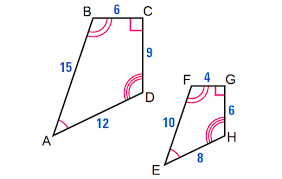
3/2
Triangle ABC has vertices A (2,4) and B (4,6)
Triangle is dilated by a factor of 1/7, would the image be an enlargement or reduction?
reduction
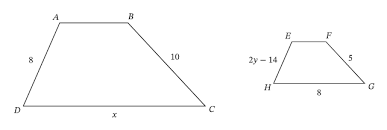
Solve for y
y = 9
Finish the similarity statement for the three triangles:
Triangle ABC ~ ...
ABC ~ DEF ~ GHK